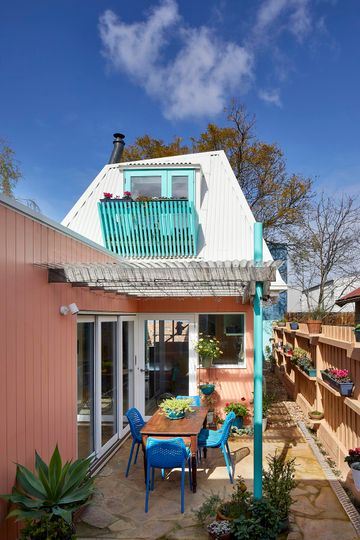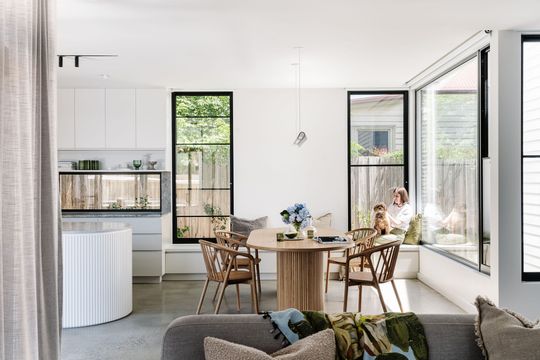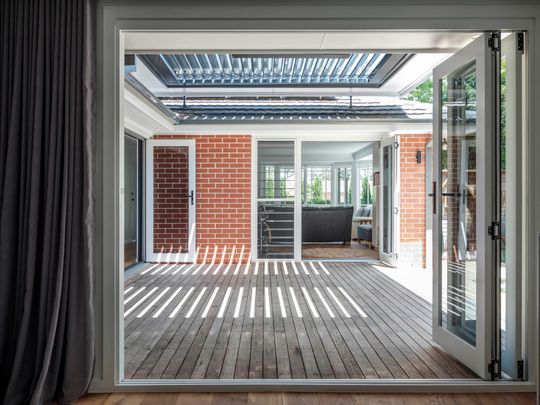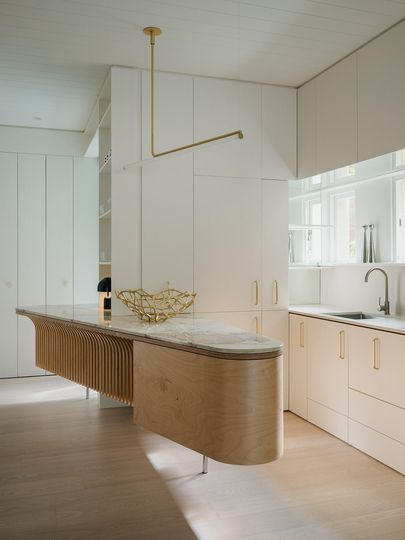Maximising natural light in a home can transform living spaces, making them feel more open, vibrant, and inviting. While a home facing the wrong direction or hemmed in by neihgbours can give real locked in a basement vibes. Here are seven design secrets to help you light up your life:
1. Overcome Poor Orientation
One of the biggest challenges in maximising natural light is poor orientation, especially if living areas face south or the site is tight and hemmed in on all sides. Clever design strategies, such as using light wells or clerestory windows, can help overcome these challenges by capturing and distributing light effectively. If you're in a really tight predicament where there are limited ways to bring in light, you can even think about a skylight, they can even be openable for ventilation (and some will even automatically close if it senses rain). Even if there's another storey above your space and no opportunity for a skylight, there are now solar-powered lights that mimic intensity and tone of the sun outside to give the illusion of a real skylight! While it's never going to be as good as real natural light, it's a clever solution if you're in a pickle!

Orienting the addition around a light courtyard helps to overcome a challenging orientation and narrow site at Little Pinky House.
2. Use Multiple Light Sources
Bringing light in from more than one side of a room significantly enhances the quality and quantity of natural light. This approach ensures light enters the home at different times of the day, creating a dynamic and well-lit environment. Additionally, incorporating skylights can introduce natural light into areas where traditional windows are impractical. If all else fails, a large lamp or supplementary artificial lighting is a great way to give the illusion of more light. Smart lamps can also be used to match the colour of the sun at a given time of day, so in the morning it will be brighter and blue, while as the sun sets it will fade to a warm yellow. Much better than a single bright white light!

Windows facing multiple directions and of different configurations maximises natural light and views at Hope House.
3. Leverage Colours and Materials
The choice of colours and materials plays a crucial role in how light interacts with a space. Light colours make a room feel brighter, while the tone of the colour can affect the ambiance. Blue-based tones emulate natural daylight, while yellow-based tones create a warm and cosy feel. Glossy materials reflect light, enhancing brightness, while matte materials absorb light, reducing glare. So, when planning project natural light, balance glossy materials with matte to create a comfortable and well-lit space without too much glare.

The architect has fun with colour and reflective surfaces at to maximise the natural light and ambiance in this inner city terrace renovation.
4. Optimise Window Placement
North-facing windows with appropriate sun shading provide the best natural light, offering warmth in winter and blocking excessive heat in summer. Clerestory windows and skylights are excellent for capturing and dispersing light throughout the home, adding a sense of volume and space. Strategically placing windows or skylights over stairs can also illuminate the centre of the house effectively. Thinking about window placement to capture and distribute light effectively is a clever way to improve the sense of space in your home and create a more beautiful environment.

An adjustable awning over the outdoor entertaining area at House Anew lets natural light into the home in winter, while creating a cool, shady courtyard during summer. Lager windows surrounding the courtyard take advantage of this outdoor room.
5. Implement Light Wells
Light wells or light courts are innovative solutions for bringing natural light into poorly oriented or hemmed-in spaces. Ideally, they'll capture sunlight from the north and distribute it throughout the home, creating a brighter and more inviting atmosphere. The can also simply increase the amount of reflected light and add another light source to the room. This technique is particularly useful in dense urban settings where direct sunlight is limited.

In the Malvern House project, a light well was used to introduce natural light into the heart of the home, creating a bright and airy environment despite the property's challenging orientation and site constraints.
6. Reflective Surfaces
Incorporating reflective surfaces, such as mirrors and glossy finishes, can help bounce light around the room, making it appear brighter and more spacious. This technique is especially effective in smaller or darker areas, enhancing the overall luminosity without additional light sources.

Using mirrors and reflective surfaces at Kirribilli Downsize Apartment increases the sense of space and light in this apartment kitchen.
7. Beg borrow and steal light
If all else fails, steal light! You can borrow from adjacent rooms using frosted glass or clerestory windows. This can be a great way to bring natural light into an internal room where access to an external wall is not possible, or blocked by a neighbour.
By implementing these design secrets, you can transform your home into a well-lit sanctuary, enhancing both its aesthetic appeal and functional comfort.